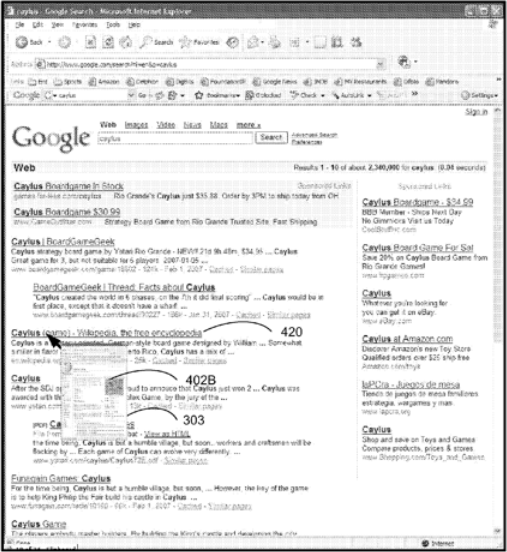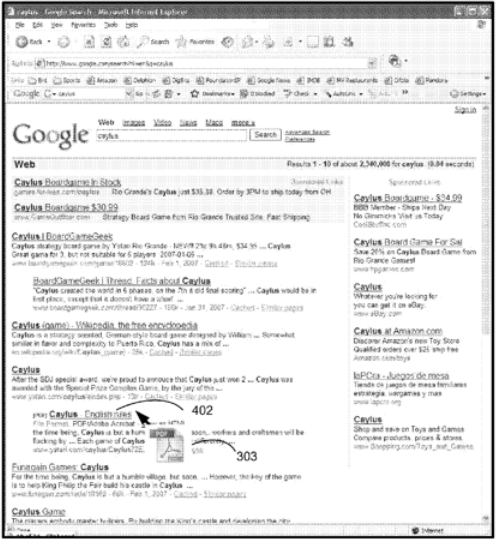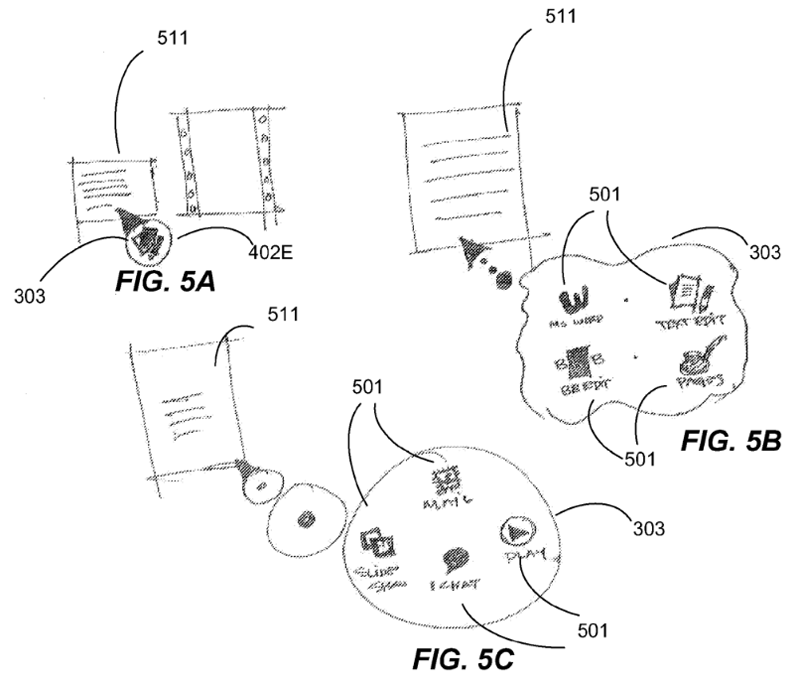A patent filing published for the first time on Thursday notes that it's often useful for a user to be given an indication as to the content of a target file or link, before the user clicks on the user-activatable element that will open the target.
Cursor limitations
However, the text or icon normally associated with a user-activatable element in today's computer operating systems is typically insufficient to provide a user with enough information to determine whether the target item is of interest.
For instance, the appearance of an on-screen cursor may change to a text entry cursor (vertical bar) when positioned in a text entry field, or morph into a hand or arrow when positioned over a movable object, which offers some information as to the type of input operation that can be performed.
"However, such limited information generally fails to provide useful information about a target item referenced by a user-activatable element," Apple wrote. "In particular, current user interfaces do not generally provide any technique for providing detailed information about a target within a cursor in a manner that is responsive and dynamically controllable by the user."
Instead, the company proposes methods for changing the appearance of an on-screen cursor to provide excerpt of the contents of a target, what applications are available to open the target, as well as meta-data or other descriptive information concerning the target.
QuickLook
One method described in the filing essentially relates to making QuickLook technology — currently available in the Finder of Mac OS X Leopard, and system icons in Mac OS X Snow Leopard betas — accessible to the cursor. In the example shown below, a thumbnail of a web page is displayed natively by Apple's Safari browser when a user places the mouse over a hyperlink.
Similarly, a mouse-over can present the user with an icon representing the type of document associated with link when a thumbnail image is not available or cannot be read quickly enough to provide satisfactory response time.
Launch and operational controls
Most useful, however, are mouse-over events that cause the cursor to produce visual representations of the options available for working with a file or link. In the example shown below, a mouse-over event results in the display of four operations a user can perform on a file, such as a folder of pictures or a video file. Without activating the file, dragging it to a dock icon, or using a contextual menu, the user can choose to initiate a slideshow, email the file, send the file via iChat, or begin playing or displaying the file.
Likewise, the cursor may instead display four applications suitable for working with a file, letting the user open the file within an application other than its default application without having to use a contextual menu or fussing with the Mac OS X dock. For example, a mouse-over event on a text file would allow the user to open the file in either Word, BBedit, Pages, or Text Edit.
The 17-page filing is credited to Apple engineer John Louch.
 Sam Oliver
Sam Oliver









-m.jpg)






 Charles Martin
Charles Martin
 Marko Zivkovic
Marko Zivkovic
 Andrew Orr
Andrew Orr
 Amber Neely
Amber Neely

 William Gallagher and Mike Wuerthele
William Gallagher and Mike Wuerthele











23 Comments
Umm... why are the screen shots of Internet Explorer??
Umm... why are the screen shots of Internet Explorer??
Not sure -- I found that odd as well. It's certainly an Apple filing, however.
Best,
K
Not sure -- I found that odd as well. It's certainly an Apple filing, however.
Best,
K
To create confusion. Obviously, it's working.
\ half of those have been available through firefox extensions for years....
We're talking about full OS here, not just a browser. Once a file is off the Internet, Firefox can't help you...